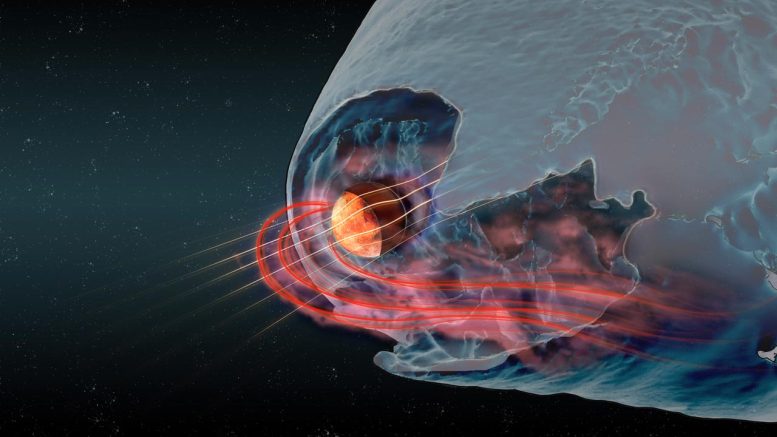
By Umea University October 4, 2024
Collected at: https://scitechdaily.com/unexpected-interactions-how-solar-winds-are-stripping-mars-of-its-atmosphere/
Researchers exploring Mars have uncovered how the planet’s lack of an internal magnetic field results in an induced magnetosphere, which directly interacts with the solar wind.
Using instruments like ASPERA-3 on the Mars Express and MAVEN spacecraft, scientists have documented changes in this magnetosphere when aligned with solar wind magnetic fields, impacting atmospheric loss to space.
Understanding Induced Magnetospheres
When a planet does not possess an internal magnetic field, it can develop an induced magnetosphere through direct interactions between its atmosphere and the solar wind. The solar wind is a stream of charged particles from the Sun with an embedded magnetic field.
The scientists have been using computer models and observations from scientific instruments, as IRF’s Analyzer of Space Plasmas and Energetic Atoms (ASPERA-3), onboard the ESA spacecraft Mars Express and NASA’s spacecraft MAVEN, both of which orbit around Mars.

Impact of Solar Wind Alignment
“When the solar wind protons flow align with the magnetic field of the solar wind, the induced magnetosphere of Mars will degenerate. Such a degenerate magnetosphere will affect how much atmosphere is lost from Mars to space,” says the lead author Qi Zhang, PhD student at IRF and Umeå University.
The results were published in the journal Nature on September 18, 2024.
Long-Term Observations and Findings
The ASPERA-3 instrument measures the fluxes of ions, electrons, and neutral atoms in space around Mars. During more than 20 years in orbit around the planet, ASPERA-3 has made a number of interesting observations at Mars, including continuous measurements of the ion outflow from the planet.
Reference: “Mars’s induced magnetosphere can degenerate” by Qi Zhang, Stas Barabash, Mats Holmstrom, Xiao-dong Wang, Yoshifumi Futaana, Christopher M. Fowler, Robin Ramstad and Hans Nilsson, 18 September 2024, Nature.
DOI: 10.1038/s41586-024-07959-z

Leave a Reply